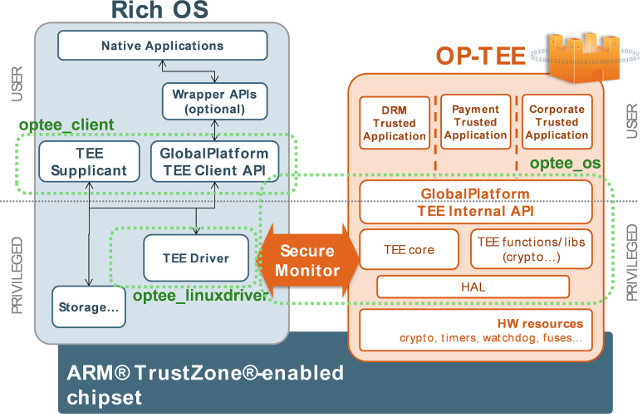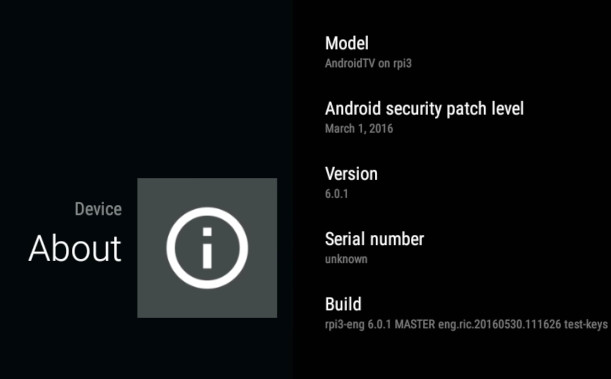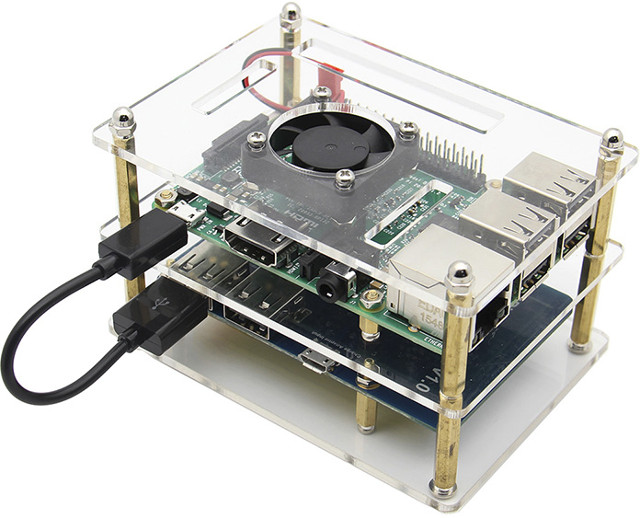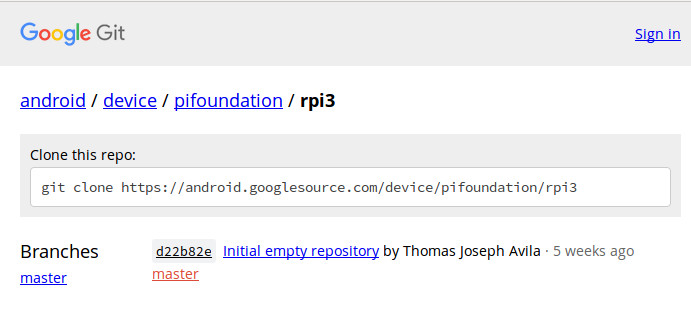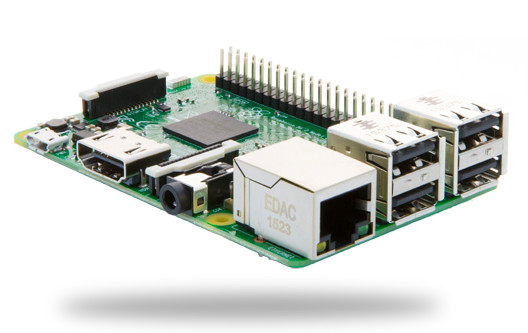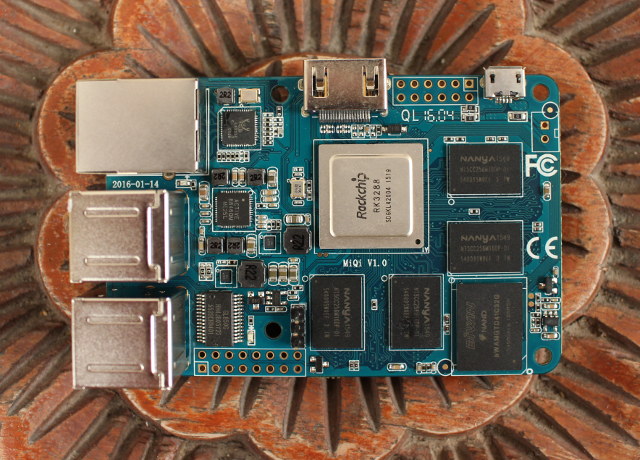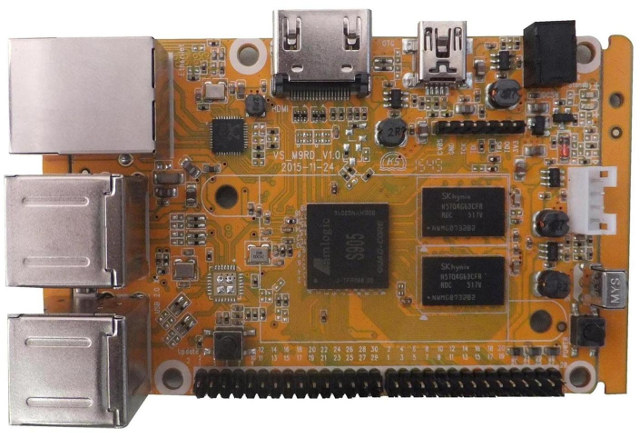If you ever wanted to experiment with ARM Trustzone, and IoT security, you’ll soon be able to do so with the Raspberry Pi 3 board thanks to a port of Linaro OP-TEE (Open Portable Trusted Environment Execution) by Sequitur Labs. Broadcom BCM2737 SoC found in Raspberry Pi 3 board already had TrustZone hardware for isolation and protection for sensitive material such as cryptographic keys, algorithms and data, but the upcoming software release will mean the feature can now be used, and it’s free for trial/evaluation, and education. Trustzone is also used for DRM (digital rights management), but in the case of Raspberry Pi 3 it will most likely used to teach how to secure the Internet of Things (IoT). The release is scheduled for July 11, with source code and documentation to be available in OP-TEE github account. All you’ll need to get started is a Raspberry Pi 3 board, […]
Android TV 6.0 Ported to Raspberry Pi 3 with 2D/3D GPU Acceleration, but no Hardware Video Decoding (Yet)
Google might be working on Android or Brillo for Raspberry Pi 3, with a new repository created in AOSP, meaning that, if that’s Android, you won’t probably get the Google Mobiles Services by default, but those can be side-loaded to get access the the Play Store, Youtube, etc… In the meantime, a group of developer have been working Android 6.0 TV port for Raspberry Pi 3. That’s the same team who worked on previous images for Raspberry Pi and Raspberry Pi 2 boards using “peyo” port, and that did not have any support for 2D/3D graphics acceleration, nor hardware video decoding. But they’ve made some improvements for their Android TV 6.0.1 release for Raspberry Pi 3, as 2D/3D GPU acceleration is enabled using the Mesa drivers, and Kodi user interface, game emulators, WelGL in Chrome browser all work relatively well using 1280×720 frame buffer resolution as you can see from […]
Enclosure & Battery Kit for Raspberry Pi Boards Sells for $22
The easiest solution to power Raspberry Pi boards from batteries is to use a USB power bank, and if you want a neater solution, PiJuice HAT board is quite nice, but for something a little cheaper and available right now, Geekworm’s RPi PowerPack kit could be an interesting option with an acrylic enclosure, a battery board with a 3,800 mAh Lithium battery, a fan, three heatsinks, as well as a micro USB to USB cable. Key features of RPi PowerPack board: 3,800 mAh Lithium battery good for around 9 hours on the Raspberry Pi 3. Output current – 1.8A Output voltage: 5.1V ± 0.1V USB – 2x USB output port Standard charging current / voltage – 1.0A/5.0V via 1x micro USB port. Misc – On/Off switch (The battery still charges in off position) The kit with the 3,800 mAh battery is sold for $22.43 on DealExtreme. Jean-Luc Aufranc (CNXSoft)Jean-Luc started […]
Raspberry Pi 3 Repository Has Been Added to Android Open Source Project
Android has been ported to the Raspberry Pi boards in the past, but the images were not really usable because the implementation lacked 2D & 3D graphics support. The good news is that Raspberry Pi 3 is likely to officially support the latest version of Android soon, because rpi3 repository has been created in AOSP about 5 weeks ago. That’s all we know for now. Raspberry Pi 3 could then be part of the second wave of boards officially supported in Android “mainline”, as currently 96Boards Hikey is the only supported board in AOSP. However, If we go down in the git repo to android/device, we can also see MIPS Creator CI40, Aaeon Upboard, i.mx6ul picoimx board, Intel Edison and Minnowboard, and a few others. Some of the boards will run Brillo instead of Android however, or it could be a different project, so we’ll have to see what happens […]
Preliminary Open Source Bootloader for Raspberry Pi Boards Released
Raspberry Pi boards require a closed-source binary to boot. I understand it this is handled by VideoCore IV GPU, and so far the Raspberry Pi foundation are not release source code for the bootloader, possibly due to legal reason (e.g. NDA to Broadcom). But I noticed people chatting about an open source bootloader for Raspberry Pi on sunxi-linux IRC channel. The bootloaded called rpi-open-firmware has been developed by Kristina Brooks (christinaa), who previously did some work on the VideoCore IV GPU, as you can see on her blog and github account. Kristina describe the project as follows: This is a small firmware for RPi VPU (VideoCore4) versions 1/2/3 that is capable of initializing VPU PLL (PLLC), UART, SDRAM and ARM itself. It’s intended to be used instead of stock bootcode.bin on RPi’s SD card. You need to have UART to see anything meaningful as far as output goes. This has […]
Linux 4.6 Release – Main Changes, ARM and MIPS Architectures
Linus Torvalds released Linux Kernel 4.6 earlier today: It’s just as well I didn’t cut the rc cycle short, since the last week ended up getting a few more fixes than expected, but nothing in there feels all that odd or out of line. So 4.6 is out there at the normal schedule, and that obviously also means that I’ll start doing merge window pull requests for 4.7 starting tomorrow. Since rc7, there’s been small noise all over, with driver fixes being the bulk of it, but there is minor noise all over (perf tooling, networking, filesystems, documentation, some small arch fixes..) The appended shortlog will give you a feel for what’s been going on during the last week. The 4.6 kernel on the whole was a fairly big release – more commits than we’ve had in a while. But it all felt fairly calm despite that. Linux 4.5 added […]
MiQi Dual Boot Android & Ubuntu Development Board Crowdfunding Campaign Has Launched
MiQi is a development board using a form factor similar to Raspberry Pi boards, but based on a more powerful Rockchip RK3288 Cortex A17 processor combined with 1 or 2 GB. I had the change to test an early sample pre-loaded with a dual boot image with Android 5.1 and Lubuntu 14.04, and found it to be one the fastest sub $100 development board in Linux, behind Hardkernel ODROID-XU4, as well as better CPU & GPU performance compared to recent Android TV boxes based on Amlogic S905, Rockchip RK3368, and so on. MQMaker has now launched a flexible funding crowdfunding campaign on Indiegogo to raise funds for mass production. Let’s remind us of MiQi hardware specifications first: SoC – Rockchip 3288 quad core ARM Cortex A17 up to 1.8 GHz with Mali-T764 GPU supporting OpenGL ES 1.1/2.0 /3.0, and OpenCL 1.1 System Memory – 1 or 2G DDR3 depending on model Storage – 8 or 32 […]
VideoStrong VS-M9RD Development Board is a Raspberry Pi Lookalike with Amlogic S905 SoC
VideoStrong is better known for their Android TV boxes with or without digital TV tuners, such as K1 Plus T2/S2 TV box, but the company has also designed several Amlogic based single board computers and development boards, including the latest Raspberry Pi inspired VS-M9RD board powered by Amlogic S905 quad core 64-bit ARM processor. VS-M9RD board technical specifications: SoC – Amlogic S905 quad core cortex-A53 processor @ 2.0 GHz with penta-core Mali-450 GPU up to 750 MHz System Memory – 1GB DDR3 SDRAM Storage – Optional 4 to 32 GB eMMC flash module, micro SD card slot Video Output – HDMI 2.0 up to 4K2K Connectivity – Gigabit Ethernet USB – 4x USB 2.0 host ports + mini USB OTG port Expansion Header 30-pin header 28-pin header 7-pin header with CVBS and JTAG signals Debugging – 4-pin 2.54mm pitch serial console header Misc – IR receiver, power and update buttons. […]


